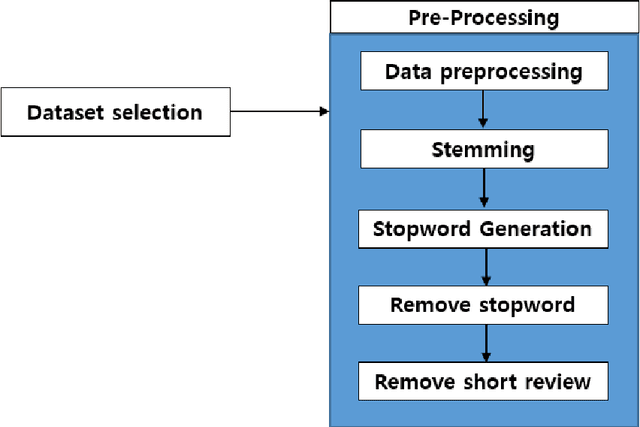Deaho Seo
A Novel Patent Similarity Measurement Methodology: Semantic Distance and Technological Distance
Mar 23, 2023Abstract:Measuring similarity between patents is an essential step to ensure novelty of innovation. However, a large number of methods of measuring the similarity between patents still rely on manual classification of patents by experts. Another body of research has proposed automated methods; nevertheless, most of it solely focuses on the semantic similarity of patents. In order to tackle these limitations, we propose a hybrid method for automatically measuring the similarity between patents, considering both semantic and technological similarities. We measure the semantic similarity based on patent texts using BERT, calculate the technological similarity with IPC codes using Jaccard similarity, and perform hybridization by assigning weights to the two similarity methods. Our evaluation result demonstrates that the proposed method outperforms the baseline that considers the semantic similarity only.
Multi label classification of Artificial Intelligence related patents using Modified D2SBERT and Sentence Attention mechanism
Mar 03, 2023



Abstract:Patent classification is an essential task in patent information management and patent knowledge mining. It is very important to classify patents related to artificial intelligence, which is the biggest topic these days. However, artificial intelligence-related patents are very difficult to classify because it is a mixture of complex technologies and legal terms. Moreover, due to the unsatisfactory performance of current algorithms, it is still mostly done manually, wasting a lot of time and money. Therefore, we present a method for classifying artificial intelligence-related patents published by the USPTO using natural language processing technique and deep learning methodology. We use deformed BERT and sentence attention overcome the limitations of BERT. Our experiment result is highest performance compared to other deep learning methods.
5-Star Hotel Customer Satisfaction Analysis Using Hybrid Methodology
Sep 26, 2022



Abstract:Due to the rapid development of non-face-to-face services due to the corona virus, commerce through the Internet, such as sales and reservations, is increasing very rapidly. Consumers also post reviews, suggestions, or judgments about goods or services on the website. The review data directly used by consumers provides positive feedback and nice impact to consumers, such as creating business value. Therefore, analysing review data is very important from a marketing point of view. Our research suggests a new way to find factors for customer satisfaction through review data. We applied a method to find factors for customer satisfaction by mixing and using the data mining technique, which is a big data analysis method, and the natural language processing technique, which is a language processing method, in our research. Unlike many studies on customer satisfaction that have been conducted in the past, our research has a novelty of the thesis by using various techniques. And as a result of the analysis, the results of our experiments were very accurate.
 Add to Chrome
Add to Chrome Add to Firefox
Add to Firefox Add to Edge
Add to Edge